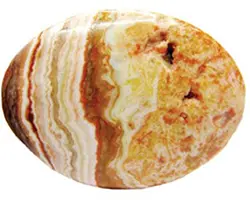
Exploring the Origins
Jasper, a type of opaque microcrystalline quartz, is known for its wide range of varieties and global occurrence. Its appearance is heavily influenced by organic materials and mineral inclusions. Leopardskin jasper resembles animal spots, while picture jasper displays landscape-like patterns. Rainforest jasper has a mossy look, and red jasper’s rich color comes from high iron content.
Historical Significance and Lore
Ancient Egyptians used jasper amulets in burials for safe passage to the afterlife. Jasper has been regarded as the “rain bringer” in various cultures and used in dowsing. Saint Hildegard of Bingen highlighted jasper’s healing properties, recommending it for various ailments including hay fever and cardiac issues.
Healing Properties
Jasper is celebrated for its regenerative healing effects. Leopardskin jasper supports muscles, tendons, bones, teeth, and hair. Picture and rainforest jasper stimulate the immune system and cleanse the kidneys and liver. Red jasper is effective for blood-related issues and supports healthy pregnancies.
Magical Uses
Regarded as “the nurturing stone,” jasper has varied mystical applications. Leopardskin jasper aids in dimensional journeys and personal transformation. Picture jasper is believed to convey messages from the Earth Mother, while rainforest jasper addresses past-life issues. Red jasper under the pillow enhances dream recall.
Feng Shui Applications
In Feng Shui, picture and rainforest jasper embody wood energy, suitable for the eastern area of a space to promote growth. Red jasper, with its fire energy, is aligned with the southern area of a home or room, symbolizing warmth and activity.
Personal and Spiritual Growth
Leopardskin jasper grounds spiritual practices and encourages exploration beyond comfort zones. Red jasper aids in clearing the mind for meditation, increasing focus and endurance in spiritual practices. Jasper, in its various forms, enhances personal development and spiritual connections.
